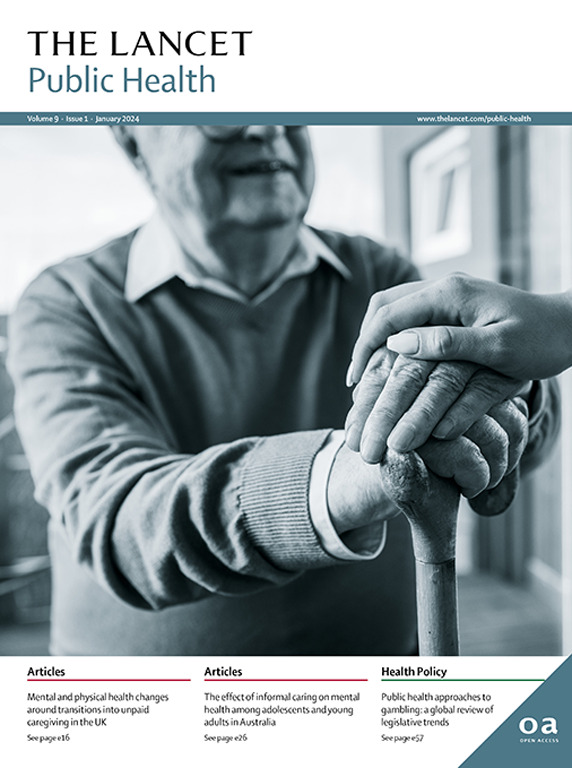2010年至2024年间欧洲和北美报告短缺的药物使用和利用模式的变化:一项网络队列研究
IF 25.2
1区 医学
Q1 PUBLIC, ENVIRONMENTAL & OCCUPATIONAL HEALTH
引用次数: 0
摘要
药物短缺会对患者护理产生负面影响。我们的目的是估计2013年1月至2023年9月期间欧洲药品管理局宣布的短缺药物的发生率和流行率,并描述这些药物的使用者特征。在这项跨国网络队列研究中,我们使用了来自18个欧洲国家和美国的52个数据库的常规收集数据,涵盖初级保健、二级保健、健康保险索赔和疾病登记。我们纳入了所有在2010年至2024年间至少有365天病史的参与者。我们估计了报告短缺药物的年发病率和使用期间流行率(n=16)及其主要替代品(n=41)。在宣布短缺后,发病率或流行率下降33%或更多被认为是短缺的确认。此外,我们分析了年龄、性别、适应症、持续时间和剂量方面的使用变化。发现8种药物的发病率降低33%或更高,9种药物的患病率降低33%或更高。在数量最多的国家和数据库中,受影响的药物是瓦伦尼克林和阿莫西林(单独使用或与克拉维酸酯合用)。此外,我们观察到阿替普酶的适应症(芬兰和德国医院在短缺期间肺栓塞适应症增加)和沙伐单抗(类风湿关节炎适应症在英国、西班牙、芬兰和瑞典的数据库中减少)的变化;在sarilumab的意外使用者中,荷兰数据库中观察到累积剂量减少(从2020年的84 mg到2023年的28 mg),芬兰数据库中观察到治疗持续时间减少(从2020年的104天到2022年的1天)和比利时数据库中观察到治疗持续时间减少(从2020年的71天到2022年的30天)。本研究强调了药物短缺公告后药物使用的发生率和流行率的变化,以及在适应证、持续时间或处方药物剂量方面观察到的患者护理的变化。我们的研究结果表明,在欧洲和美国都观察到一些使用减少,而其他国家则有所不同。需要更多的研究来减少全球药物短缺的影响。资助创新药物倡议2联合事业。本文章由计算机程序翻译,如有差异,请以英文原文为准。
Changes in use and utilisation patterns of drugs with reported shortages between 2010 and 2024 in Europe and North America: a network cohort study
Background
Drug shortages can negatively impact patient care. We aimed to estimate the incidence and prevalence of use of medicines with shortages announced by the European Medicines Agency between January, 2013, and September, 2023, and to characterise the users of these drugs.Methods
In this multinational network cohort study, we used routinely collected data from 52 databases across 18 European countries and the USA covering primary care, secondary care, health insurance claims, and disease registries. We included all participants with a minimum of 365 days of medical history between 2010 and 2024. We estimated annual incidence rates and period prevalence of use of medicines with a reported shortage (n=16), and their key alternatives (n=41). A reduction of 33% or more in incidence or prevalence after the shortage announcement was considered confirmation of a shortage. Additionally, we analysed changes in utilisation in terms of age, sex, indication, duration, and dosage.Findings
Eight drugs had a 33% or higher reduction in incidence and nine drugs had a 33% or higher reduction in prevalence. Varenicline and amoxicillin (alone or combined with clavulanate) were the medicines affected in the highest number of countries and databases. Additionally, we observed changes in the indication of alteplase (pulmonary embolism indication increased in hospitals in Finland and Germany during the shortage period) and sarilumab (rheumatoid arthritis indication decreased in databases in the UK, Spain, Finland, and Sweden); and among incident users of sarilumab, a decrease in the cumulative dose was observed in databases in the Netherlands (from 84 mg in 2020 to 28 mg in 2023) and a reduction in treatment duration was observed in databases in Finland (from 104 days in 2020 to 1 day in 2022) and Belgium (from 71 days in 2020 to 30 days in 2022).Interpretation
This study highlighted changes in incidence and prevalence of use of medicines after shortage announcements, and changes observed in patient care in terms of the indication, duration, or prescribed dose of medicines. Our findings showed that some reductions in use were observed across Europe and the USA, and others differed across countries. More research is needed to reduce the effects of drug shortages globally.Funding
Innovative Medicines Initiative 2 Joint Undertaking.求助全文
通过发布文献求助,成功后即可免费获取论文全文。
去求助
来源期刊

Lancet Public Health
Medicine-Public Health, Environmental and Occupational Health
CiteScore
55.60
自引率
0.80%
发文量
305
审稿时长
8 weeks
期刊介绍:
The Lancet Public Health is committed to tackling the most pressing issues across all aspects of public health. We have a strong commitment to using science to improve health equity and social justice. In line with the values and vision of The Lancet, we take a broad and inclusive approach to public health and are interested in interdisciplinary research.
We publish a range of content types that can advance public health policies and outcomes. These include Articles, Review, Comment, and Correspondence. Learn more about the types of papers we publish.
 求助内容:
求助内容: 应助结果提醒方式:
应助结果提醒方式:


